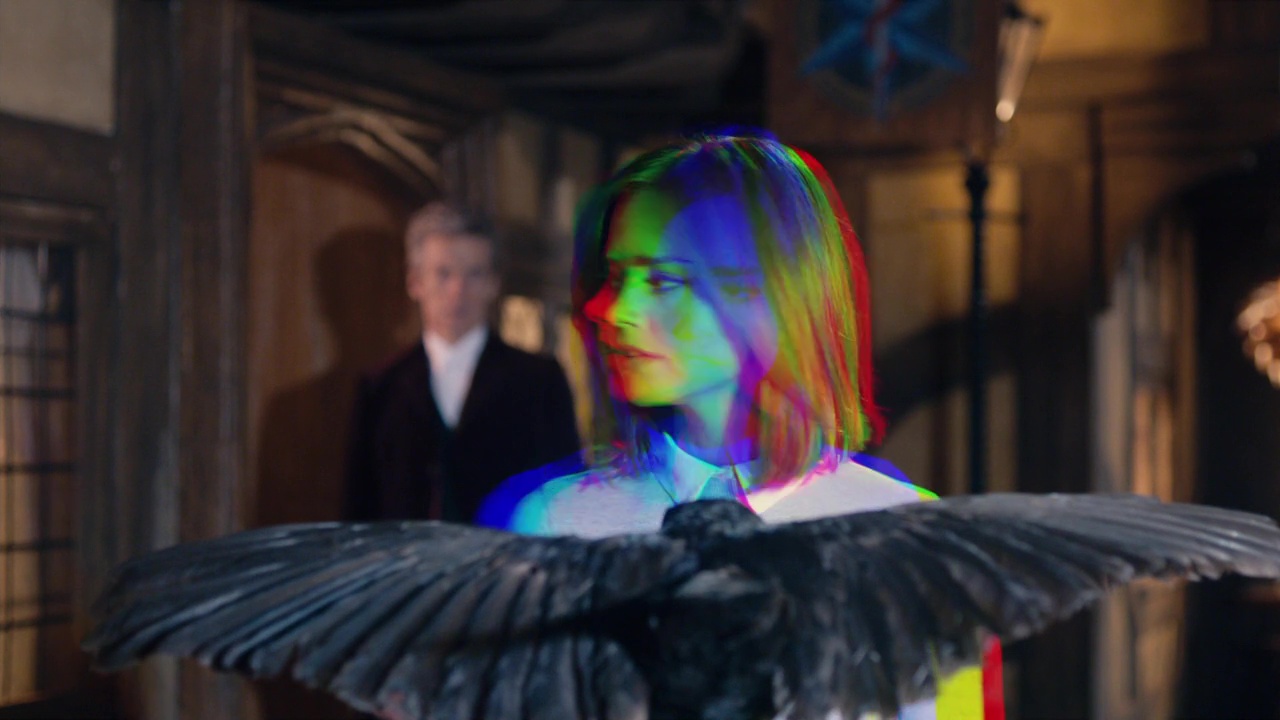Clara Who: The Impossible Narrator
 I was not as entranced with Series Nine as I’d hoped, but that may well be due to events in my own life and the kind of work that’s been on my plate this fall. I realize I haven’t written nearly as much about the show as I have in years past. So, this is to kind of rectify that, somewhat, and to encapsulate my thoughts on the series as a whole, and particularly in the context of Clara’s overall arc in the show.
I was not as entranced with Series Nine as I’d hoped, but that may well be due to events in my own life and the kind of work that’s been on my plate this fall. I realize I haven’t written nearly as much about the show as I have in years past. So, this is to kind of rectify that, somewhat, and to encapsulate my thoughts on the series as a whole, and particularly in the context of Clara’s overall arc in the show.
This is in large part inspired by a conversation on Tumblr the last day or two, where Caitlin (abossycontrolfreak) properly tore apart the problematic Claudia Boleyn’s objections to Clara in Series 7. Mind you, there are other dynamics in this interchange involving Claudia’s style of critique, which erases or belittles countering views, and this is really the least of my concerns; both Caitlin and Julia (tillthenexttimedoctor) have effectively addressed this already, imho. At the heart of the mistake, though, was the belief that Clara wasn’t properly characterized in Series 7. But I’ve seen this a lot. It has more to do with the storytelling than the stories themselves. And even more than that, it has to do with how we read stories.
So what I really want to talk about is the role Clara plays as a storyteller, as a narrator, and how that intersects with the narration of the show as a whole. It is no secret, of course, that the nature of storytelling is one of Moffat’s main themes in his tenure of running Doctor Who, made plain in the “We’re all stories in the end” speech at the end of The Big Bang. But as we’ll see, this is also something that occurs in RTD’s handling of the series; furthermore, Clara marks a significant departure from other “narrators” as far as Companions are concerned.
A Bit of Theory
Before I get into that, I do want to briefly discuss the kind of background I’m coming from when it comes to narratology. It’s a bit of a hodge-podge, really, from deconstruction, death of the author, close reading, and all that, but I always find myself returning to Story and Discourse by Seymour Chatman, who’s a fairly significant Structuralist. Not that I fully subscribe to his theories, just that I find them a useful framework to start with.
 Like many structuralists, Chatman begins along the lines of Russian Formalism by distinguishing two aspects of narrative. The Russians used the terms “fabula” (the actual events of a narrative) and “syuzhet” (the organization of those events); Chatman uses “story” and “discourse,” but in a much broader sense, with “story” encompassing events, character, dialogue, setting (the “stuff” or “contents” of a narrative) and “discourse” including all the different ways the narrative is “told” – not just the organization of the text, but the narration of it as well. Cinematically, “discourse” would also include camera angles, cuts, lighting cues, the soundtrack, and things of that nature.
Like many structuralists, Chatman begins along the lines of Russian Formalism by distinguishing two aspects of narrative. The Russians used the terms “fabula” (the actual events of a narrative) and “syuzhet” (the organization of those events); Chatman uses “story” and “discourse,” but in a much broader sense, with “story” encompassing events, character, dialogue, setting (the “stuff” or “contents” of a narrative) and “discourse” including all the different ways the narrative is “told” – not just the organization of the text, but the narration of it as well. Cinematically, “discourse” would also include camera angles, cuts, lighting cues, the soundtrack, and things of that nature.
I actually find certain Impressionist paintings a really useful way to illustrate this difference.…
